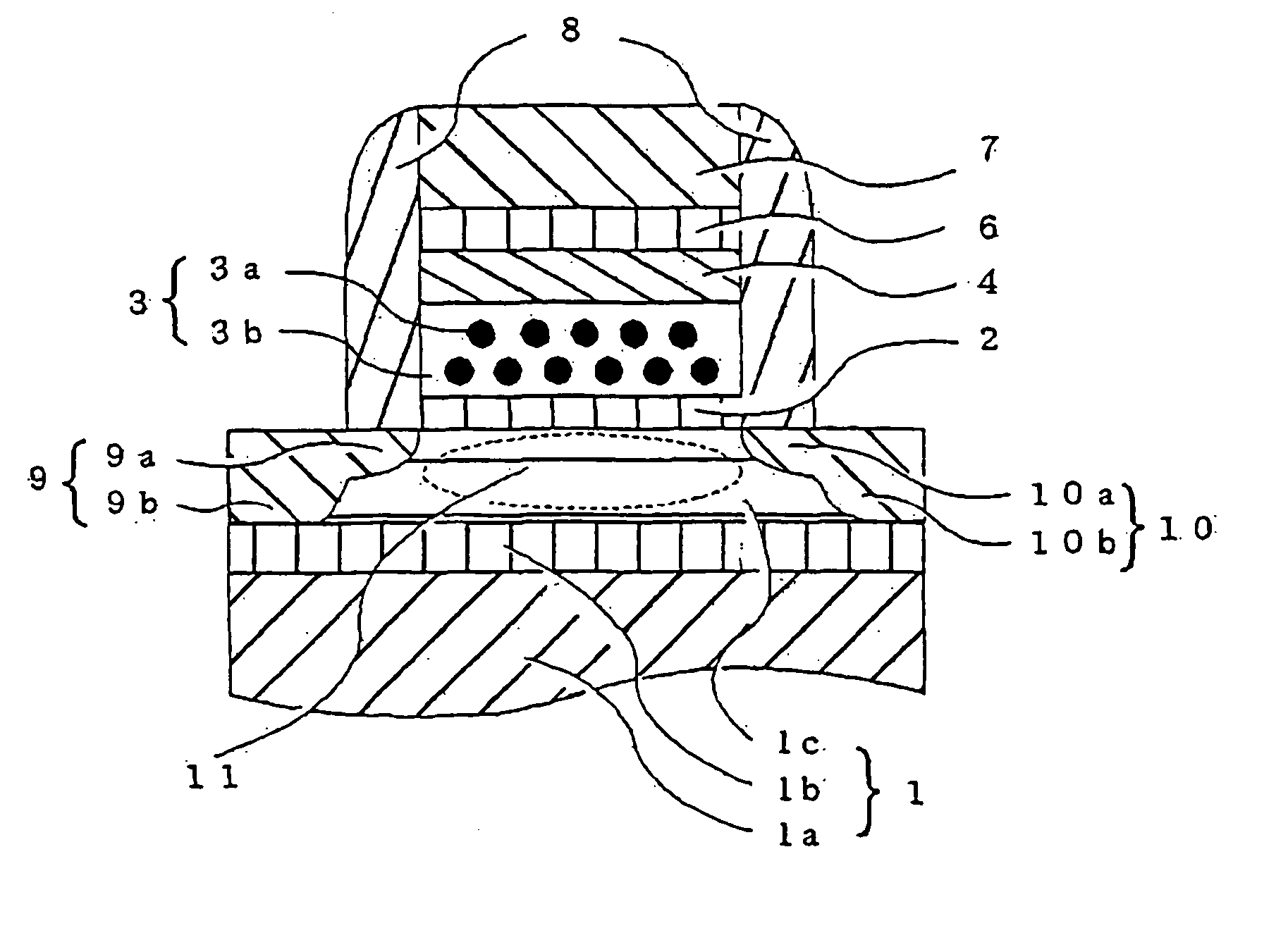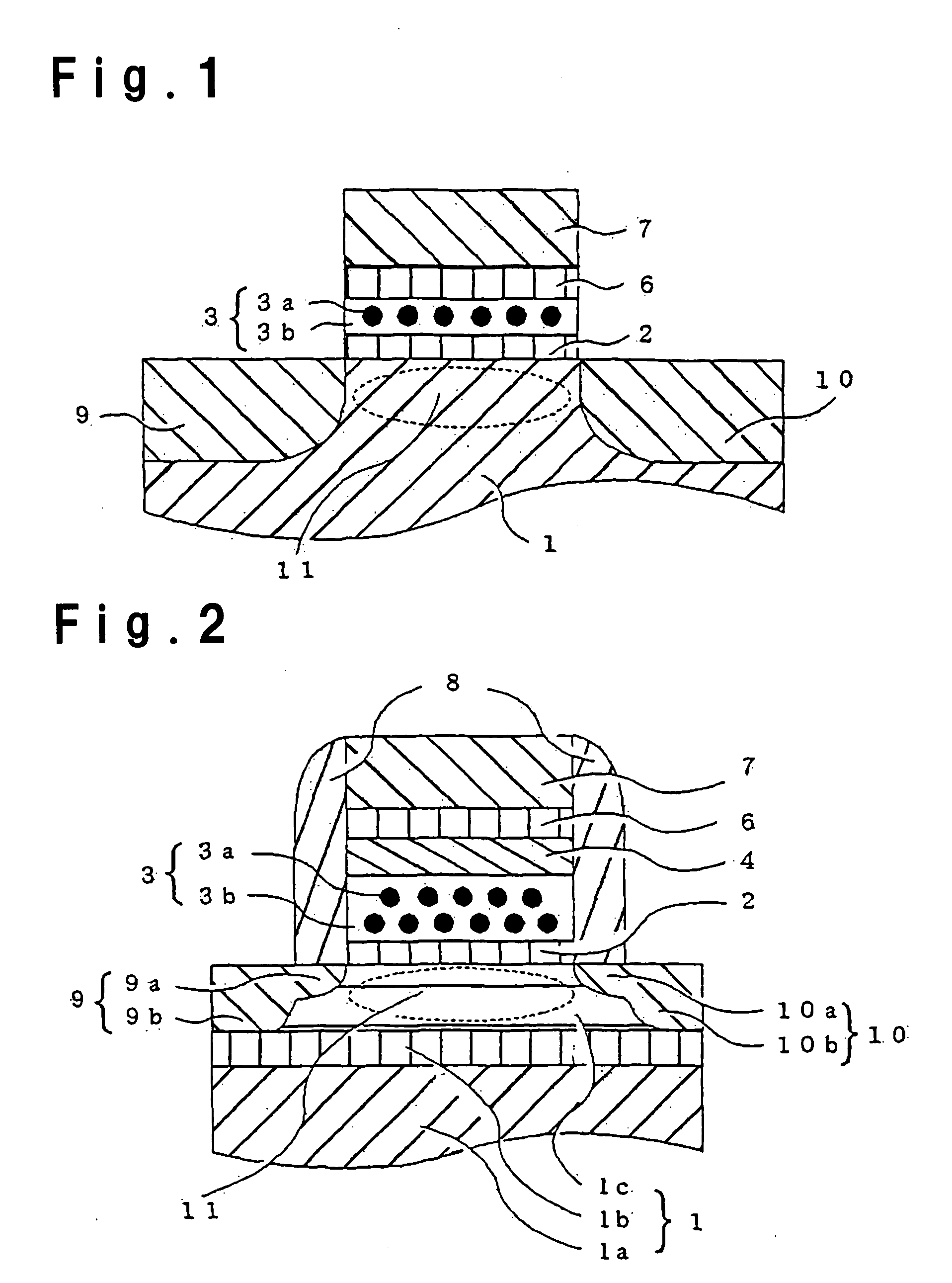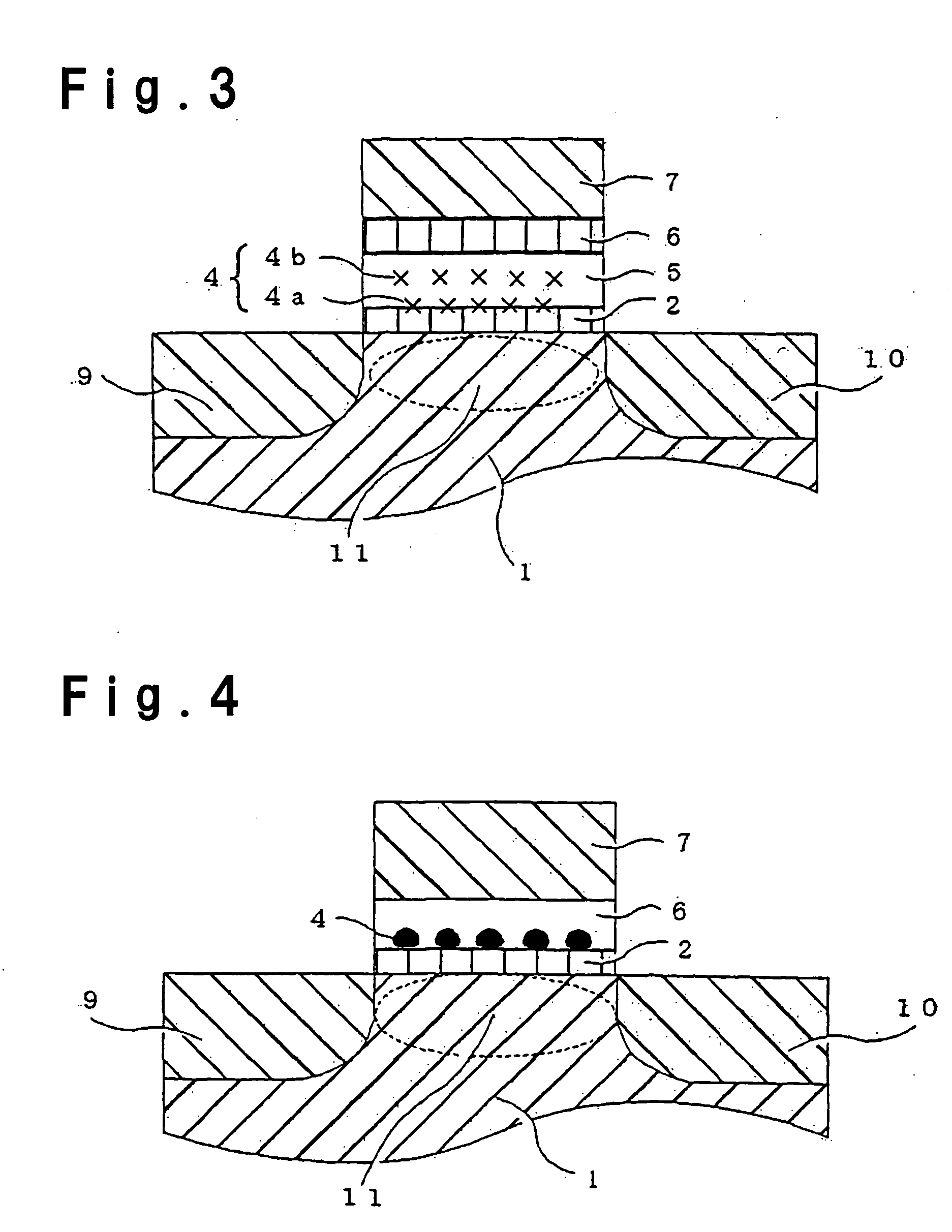Novolatile semiconductor memory device and manufacturing process of the same
- Summary
- Abstract
- Description
- Claims
- Application Information
AI Technical Summary
Benefits of technology
Problems solved by technology
Method used
Image
Examples
example 1
[0079] The nonvolatile semiconductor memory device in this example will be explained, referring to FIG. 1. A tunnel insulating film 2 was formed on a p-type single-crystal Si substrate 1. The tunnel insulating film 2 was prepared by subjecting a semiconductor substrate to thermal oxidation at 800° C. and had a thickness of 3 nm.
[0080] Then, a charge retention layer 3, which was constituted from an insulating matrix 3b containing nano-particles 3a for charge retention, was formed so as to have a thickness of 7 nm by a capacitively coupled type magnetron sputtering method as described below. Metal Co and SiO2 were selected for the nano-particles and the insulating matrix, respectively. When sputtering, a composite target which comprised a metal Co target having a diameter of 6 inches (15.24 cm) and SiO2 glass chips having 5 mm square and placed thereon was employed. The amount of the SiO2 glass chip was adjusted to occupy 70% of the area of the surface that was exposed to plasma of t...
example 2
[0084] The nonvolatile semiconductor memory device in this example will be explained, referring to FIG. 2. By a mesa separation method, each device cell on an SOI substrate was isolated, the SOI substrate comprised a p-type single-crystal Si substrate 1a, a buried oxide film 1b and a p-type SOI layer 1c. An oxide film as a tunnel insulating film 2 was formed on the p-type SOI layer 1c so as to have a thickness of 1.5 nm by thermal oxidation at 800° C.
[0085] And then, a charge retention layer 3 which comprised an insulating matrix 3b three-dimensionally containing nano-particles 3a was formed so as to have a thickness of 10 nm by a sputtering method in the manner described below. A thin film comprising two-phases of Pt and SiO2 was formed. When sputtering, a composite target with a diameter of 6 inches (15.24 cm) which was prepared by mixing Pt powder and SiO2 powder with a volume proportion of 20:80 and then sintering the mixture was employed.
[0086] After evacuating the film depos...
PUM
| Property | Measurement | Unit |
|---|---|---|
| Particle size | aaaaa | aaaaa |
| Nanoscale particle size | aaaaa | aaaaa |
| Particle diameter | aaaaa | aaaaa |
Abstract
Description
Claims
Application Information
 Login to View More
Login to View More - R&D Engineer
- R&D Manager
- IP Professional
- Industry Leading Data Capabilities
- Powerful AI technology
- Patent DNA Extraction
Browse by: Latest US Patents, China's latest patents, Technical Efficacy Thesaurus, Application Domain, Technology Topic, Popular Technical Reports.
© 2024 PatSnap. All rights reserved.Legal|Privacy policy|Modern Slavery Act Transparency Statement|Sitemap|About US| Contact US: help@patsnap.com










